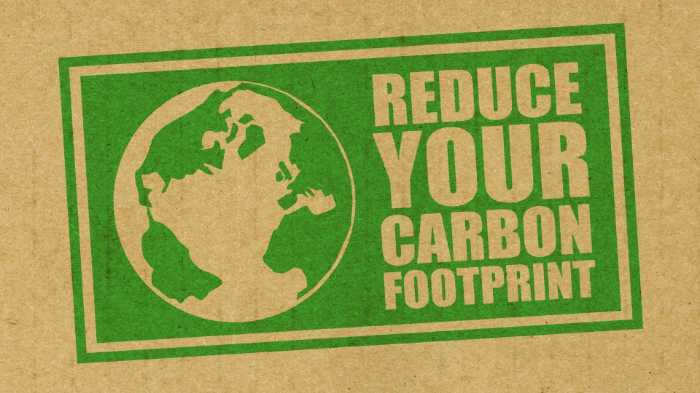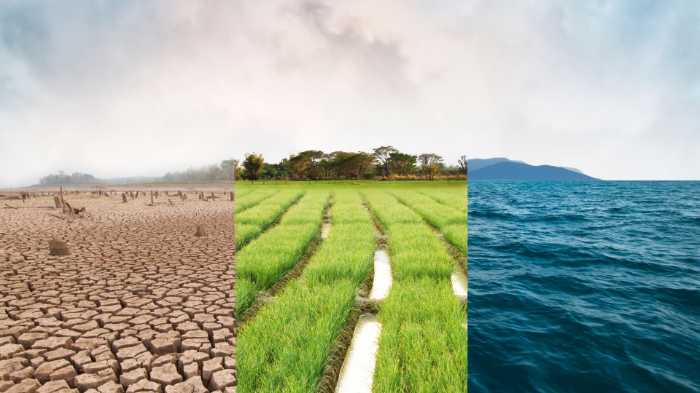
What is a carbon footprint? A carbon footprint is a measure of how much greenhouse gas or GHG emissions are produced by an individual, organization, or product. In this comprehensive guide to carbon footprints, we will discuss everything you need to know about carbon emissions! We will cover what factors contribute to carbon footprint, as well as how to reduce your own emissions. We will also explore the business and environmental implications of carbon footprints. Let’s get started!
- What is a carbon footprint, and what factors contribute to it?
- 1. Transportation sector
- 2. Energy use
- 3. Construction industry
- 4. Waste management
- 5. Manufacturing sector
- 6. Food choices
- How can you reduce your carbon footprint?
- 1. Smart transportation choices
- 2. Smart food choices
- 3. Sustainable waste management
- 4. Recycled materials
- 5. Green energy
- 6. Sustainable manufacturing
- The business and environmental implications of carbon footprints
- Conclusion to Carbon dioxide and greenhouse gases
- FAQs
What is a carbon footprint, and what factors contribute to it?

A carbon footprint is the amount of carbon dioxide that is released into the atmosphere as a result of the activities of an individual, organization, or product. Greenhouse gases include carbon dioxide, methane, nitrous oxide, and fluorinated gases. GHGs can come from natural sources like decomposing organic matter, but most come from human activities. These gases trap heat in the atmosphere and contribute to global warming.
The size of the carbon footprint depends on a number of factors, including:
1. Transportation sector
The transportation sector is responsible for nearly 28 percent of all U.S. emissions, making it the second-largest contributor after the power sector. Transportation emissions come from three main sources: tailpipes, brakes, and tires. About 60 percent come from passenger cars and light-duty trucks (e.g., SUVs and minivans), while the rest come from heavy-duty trucks, buses, trains, planes, and ships.
The transportation sector is expected to see the largest growth in emissions of any sector between now and 2050. This is largely due to increased demand for travel as the population grows and incomes rise. However, new technologies and changes in travel behavior can help to offset this growth and reduce transportation-related emissions.
2. Energy use
Burning fossil fuels such as natural gas, oil, and coal releases carbon dioxide gas into Earth’s atmosphere. There, the carbon dioxide joins other greenhouse gases—including water vapor, methane, and nitrous oxide—that together trap heat from the sun’s rays inside the atmosphere causing Earth’s average temperature to rise, a process called global warming.
The United States has one of the largest per capita carbon footprints in the world. This is partly due to the fact that we have high per capita energy consumption. In general, the more energy we use, the more carbon dioxide we release into the atmosphere.
Electricity use is responsible for about 38% of our total carbon footprint. The transportation sector is second, at 28%. Heating and cooling our homes and commercial buildings make up 12% and manufacturing 10%. Agriculture (including livestock) and other uses account for the final 12%.
Our per capita electricity consumption is more than twice that of most other industrialized countries. One reason for this is that a large percentage of our electricity still comes from burning fossil such as coal and natural gas—although this percentage has been declining in recent years as we transition to cleaner sources of energy.
You can’t improve what you don’t measure.
Free Verified Carbon Calculators.
Erase Your Carbon Footprint in less than 5 Minutes
Personal Carbon Footprint Calculator
Business Carbon Footprint Calculator
3. Construction industry
Construction activity has a significant impact on the environment. The most obvious way it affects the environment is through the emissions of carbon dioxide and other greenhouse gases. When we build anything, whether it’s a house, office, or factory, we’re using energy to do it. That means burning fossil fuel, which emits CO2 and other greenhouse gases into the atmosphere.
The production of cement, one of the main ingredients in concrete, is especially carbon-intensive. In fact, cement production is responsible for around 5% of all man-made emissions of carbon dioxide. Construction activity also results in the release of other harmful pollutants into the air, including particulate matter and nitrogen oxides.
The environmental impact of construction doesn’t stop at atmospheric pollution. The clearing of land for development also destroys natural habitats and increases soil erosion. And the construction process itself generates a lot of waste – an estimated 1.3 billion tonnes every year! Much of this waste ends up in landfill sites, where it releases methane, a powerful greenhouse gas. So, there’s no doubt that construction activity has a big impact on our environment.
4. Waste management
Every year, billions of tons of waste are generated around the world. This waste comes from a variety of sources, including households, businesses, and manufacturing facilities. While some of this waste can be recycled or reused, much of it ends up in landfills, where it decomposes and releases methane, a powerful greenhouse gas.
As the volume of waste in landfills continues to grow, so does the amount of methane being released into the atmosphere. In fact, according to the Environmental Protection Agency, methane emissions from landfills account for nearly one-fifth of all human-related methane emissions in the United States.
5. Manufacturing sector
The Manufacturing sector contains a wide range of activities that contribute directly or indirectly to the production of finished goods. This sector includes industries such as textiles, chemicals, paper, and food and beverage. The Manufacturing sector is responsible for a significant portion of global carbon emissions due largely to the use of fossil fuels in manufacturing processes.
While the Manufacturing sector plays a critical role in the global economy, it also contributes significantly to climate change, (US contributions).
6. Food choices
What someone eats plays a big role in determining an individual’s carbon footprint. Meat and dairy products, for example, tend to have a larger carbon footprint than plant-based foods. That’s because livestock requires feed, water, and land, and they produce emissions like methane gas. Processed foods also tend to have a larger carbon footprint than unprocessed foods since they require more energy and resources to produce. For calculating a low-carbon diet, you can get help from carbon footprint calculators available online.
How can you reduce your carbon footprint?

There are a number of ways to reduce your carbon footprint, including:
1. Smart transportation choices
When it comes to reducing your carbon footprint, transportation choices can make a big difference. Driving a fuel-efficient vehicle is one way to reduce emissions, but there are other options as well. Public transportation, walking, and biking are all low-carbon alternatives to driving. Carpooling is another option that can help to reduce emissions by sharing the ride with others. Telecommuting is another way to reduce your carbon footprint by eliminating the need to commute altogether. By making smart transportation choices, especially for the public sector and industry, you can help reduce your personal carbon footprint and play a role in combating climate change.
There are a number of ways to reduce transportation-related GHG emissions, including using more fuel-efficient vehicles, carpooling, taking public transportation, and choosing active travel options like walking and biking.
2. Smart food choices
One way to reduce your GHG footprint is by making smart food choices. Eating more plants and fewer animal products helps the environment in several ways. First, it takes less land to grow crops than it does to graze cattle. Second, plants require less energy and water to raise than animals. Third, plant-based foods generate fewer greenhouse gas emissions than meat and dairy products. Finally, choosing unprocessed foods over processed foods also reduces your carbon footprint. That’s because processing food requires energy, which often comes from burning fossil fuels. So, by making smart food choices, you can make a difference in the environment. That is why the Johns Hopkins Center for a Livable Future created Meatless Mondays. If we can all change our habits just one day per week, it would have a residual positive effect on our collective lives.
3. Sustainable waste management
Carbon footprints are often thought of as an individual responsibility, something that each of us can control through our daily choices. However, the way we manage our waste also has a significant impact on our carbon footprint.
Given the significant role that waste management plays in contributing to carbon emissions, it is clear that we need to find more sustainable ways to handle our waste. One way to do this is to increase our recycling efforts. By recycling more materials, we can reduce the amount of waste that ends up in landfills and prevent methane emissions from rising. We can also work to reduce our overall consumption and avoid creating waste in the first place. By making small changes in our daily habits, we can make a big difference in reducing our carbon footprint.
4. Recycled materials
One way to reduce your carbon footprint is to use recycled materials. Recycling makes use of materials that would otherwise be thrown away, which reduces the need to harvest new materials. This reduces the amount of energy and resources needed to produce new products, and it also reduces pollution.
In addition, recycling helps to save money by reducing the amount of waste that goes to landfill sites. It is estimated that recycling one ton of paper can save 17 trees, 7,000 gallons of water, and three cubic yards of landfill space. As you can see, recycling has a significant positive impact on the environment. So next time you’re about to throw something away, think twice and see if it can be recycled instead.
When it comes to the construction industry’s impact on the environment, the use of recycled materials helps reduce emissions by a fine margin. Recycled steel, for example, requires far less energy to produce than virgin steel, and using recycled aluminum can also help to reduce emissions.
In addition, using recycled materials can help to reduce waste. Construction and demolition debris is one of the largest sources of waste in the United States, but recycling this material can help to reduce the amount of waste that goes to landfills.
5. Green energy
With the growing concern over climate change, more and more people are looking for ways to reduce their carbon footprint. One way to do this is to switch to green energy sources. Green energy includes solar, wind, and hydropower, as well as geothermal and biomass energy.
These sources of energy don’t produce greenhouse gases, which are a major contributor to climate change. Switching to green energy can be a big commitment, but there are many ways to make the transition. For example, you could install solar panels on your home or business or invest in a wind turbine.
You could also switch to a green energy provider or purchase green energy credits. Any one of these steps can help you reduce your own carbon footprint and do your part to protect the planet.
6. Sustainable manufacturing
One of the best ways to reduce your personal carbon footprint is to choose products that have been made using sustainable manufacturing practices. Sustainable manufacturing is a term used to describe the production of goods in a way that minimizes environmental impact. This can include using renewable energy sources, recycling materials, and reducing waste.
By choosing products that have been made using sustainable manufacturing practices, you can help to reduce your average carbon footprint and make a positive impact on the environment. In addition, sustainable manufacturing often results in products that are higher quality and longer-lasting, so you can feel good knowing that your purchase is supporting a healthier planet.
When it comes to The manufacturing sector is responsible for a significant portion of the world’s greenhouse gas emissions. In order to reduce its impact on climate change, it is essential that the sector adopt cleaner technologies and processes. One way to do this is through the use of renewable energy sources, such as solar and wind power.
In addition, using more efficient production methods can help to reduce waste and decrease the overall energy consumption of the manufacturing process. By taking steps to become more sustainable, the Manufacturing sector can play a key role in reducing the world’s carbon footprint.
The business and environmental implications of carbon footprints

As the world becomes increasingly industrialized, businesses are emitting more and more greenhouse gases. This has serious implications for both the environment and the economy.
Climate change is already causing extreme weather events that damage infrastructure and disrupt supply chains. As emissions continue to rise, we can expect more frequent and more severe weather events. This will damage property and disrupt economic activity, leading to losses for businesses. In addition, as climate change makes parts of the world uninhabitable, businesses will be forced to relocate, incurring high costs.
Reducing carbon emissions is essential to mitigating the effects of climate change. Governments are introducing environmental regulations that force businesses to reduce their emissions. This presents a challenge for businesses, as they must find ways to operate without emitting greenhouse gases. Many businesses are investing in clean energy technologies such as solar and wind power. Others are redesigning their products and processes to be more efficient and use less energy. By reducing their carbon footprints, businesses can help to protect the environment and ensure a stable economic future.
Conclusion to Carbon dioxide and greenhouse gases
In this comprehensive guide to carbon dioxide emissions, we’ve looked at a variety of ways that you can reduce your personal carbon footprint. Switching to green energy, investing in sustainable manufacturing, and becoming more energy efficient are all great ways to reduce your impact on the environment. And as businesses become more aware of the implications of climate change, they are taking steps to reduce their carbon footprints as well. By working together, we can all make a difference in the fight against climate change.
FAQs

What is an ecological footprint?
An ecological footprint is the amount of land required to support a person or population and their activities. It can be calculated for an individual, community, city, region, or country.
What is a carbon dioxide equivalent?
A carbon dioxide equivalent (CO₂e) is a unit used to compare the emissions of different greenhouse gases. It is based on the global warming potential of each gas.
How does food production impact global temperatures?
The production and consumption of food have a significant impact on global temperatures. The growing and harvesting of crops require large amounts of energy, which often comes from burning fuels. Food production combined with food waste releases carbon dioxide, which contributes to the greenhouse effect, trapping heat and raising temperatures. Therefore, the more food produced and wasted, the higher the global temperatures will become. Moreover, the use of plastic containers to pack food adds to the environmental effects.
What is energy efficiency?
Energy efficiency is the process of using less energy to achieve the same goal. For example, a more energy-efficient light bulb uses less electricity to generate the same amount of light as a traditional light bulb.
How can organizations reduce direct emissions?
One way for organizations to reduce their direct emissions is by switching to renewable energy sources for electricity generation. Wind energy, in particular, is a low-carbon option that can substantially reduce emissions. Additionally, by reducing energy usage overall, organizations can further reduce their emissions.
How can individuals reduce their indirect emissions-related risks?
Individuals can reduce their indirect emissions-related risks by making environmentally conscious choices when they purchase products. For example, individuals can choose to purchase products with less packaging or products that are made from recycled materials. Also, individuals can choose to support organizations that are working to reduce their emissions. Moreover, individuals can spread awareness about the importance of reducing emissions. Additionally, individuals can offset their emissions by planting trees or investing in carbon offsets.

Dean Emerick is a curator on sustainability issues with ESG The Report, an online resource for SMEs and Investment professionals focusing on ESG principles. Their primary goal is to help middle-market companies automate Impact Reporting with ESG Software. Leveraging the power of AI, machine learning, and AWS to transition to a sustainable business model. Serving clients in the United States, Canada, UK, Europe, and the global community. If you want to get started, don’t forget to Get the Checklist! ✅
